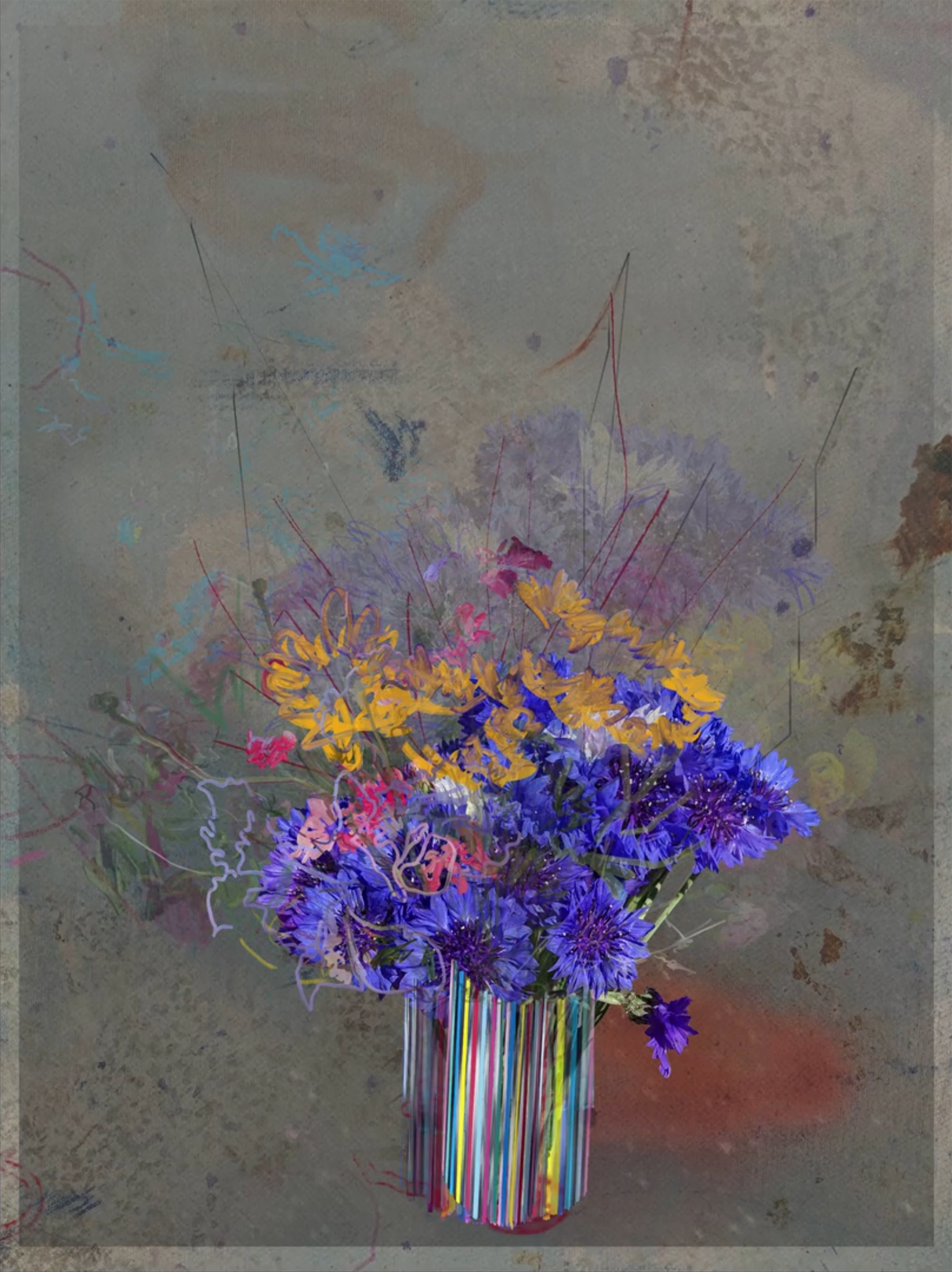Cryptoart and NFTs: good, bad, but mostly ugly
The cryptoart moment reached a staggering climax last week when Beeple (Charleston based digital artist Mike Winkelmann’s nom de net) sold his digital artwork Everydays: The First 5,000 Days NFT for over $69 million at Christie’s. This is now the third most expensive work by a living artist in existence. Its wincingly large sale price is symbolic of a recent boom in the NFT market, which grew by 299% in 2020.
Digital art like Beeple’s Everydays can be seen, copied, replicated, downloaded, stored or posted by anyone with a device which connects to the internet. It is only able to possess so much financial value because it has an NFT (Non Fungible Token) – a token, which cannot be replicated, signifying that this specific copy of the image is the ‘original.’ Each NFT is a digital record of ownership that lives on the blockchain, and so cryptoart is bought and sold with, and has its value calculated in, cryptocurrencies – namely Ethereum (ETH). This is a value system upheld by the digital fabrication of scarcity: in this way it mimics how the material art market, for all its pomp and circumstance, already functions – an important difference being that this market, inhabiting as it does a purely digital space, can operate in a decentralised manner.
The Good
This premises the argument for the good of the cryptoart market: cryptoart as a democratic space – cryptoart as a liberation from exploitative intermediaries – cryptoart as a transparent free market. Blockchain is an inherently decentralising technology inasmuch as control is retained collectively across a network of computers, not by a single group or person, and the data on the blockchain is irreversible, so transactions are permanently recorded and can be viewed by anyone: the data stored on the chain is secure, and incorruptible. Additionally, blockchain technology enables routes to shared ownership that are accessible for younger collectors with shallower pockets, and artists do not need gallery support to launch a crypto art career and sell their work. NFTs present new and significant opportunities for digital art collectors and digital artists, who generally struggle to earn a living creating the work they love. Furthermore, funding initiatives like the Mint Fund are dedicated to helping those from underrepresented communities mint their first NFTs.
The crypto art market also scores good points for its reimagining of the secondary market. Traditionally, artists see no money from their work once they’ve sold it: history has seen them cut off from secondary sales, in a generally accepted disconnect that places uncomfortable distance between the creator and the created. Blockchain technology changes this – copyrights can essentially be written into the ‘smart contract’ of a transaction, and for every subsequent resale the artist is renumerated with a percentage of the sale price. These contracts are a basis for innovation, and amongst crypto art platforms there is a general consensus that royalties be set at 10%.
By bursting the institutional bubble and exploding beyond the edges of canonical aesthetics and conventions, crypto art and NFTs, it seems, have demonstrated its ability to shake up the art market for the better. All of this good stuff is enough to make us wonder; is a more equitable art world on the horizon? Are we one step closer to ending the cloud of mass precarity that floats heavy above the world of creative work?
Queue the bad stuff.
The bad
Unfortunately, in only a matter of years, any gleaming utopian vision of a decentralised ecosystem of creators and collectors has already been undermined. Marketplaces have marched into the arena with force, with SuperRare, OpenSea, Nifty Gateway and Rarible being a few examples of emerging gatekeepers to a fresh and exciting space. Their growing influence feels reminiscent of the platform economy that emerges in online spaces, where companies like Google and Facebook dominate.
EVERYDAYS: THE FIRST 5000 DAYS by Beeple
In addition, we are already seeing a winner-takes-all market emerging that does not actually differ greatly from the one manifesting in the existing art markets. Beeple’s sale is exemplary of this, and it’s worth unpacking his super-stardom to understand that pre-Christie’s auction (itself an event for the art history books) Winkelmann already had 1.8 million Instagram followers and was creating visuals for Justin Beiber, Childish Gambino, SpaceX and Apple. In terms of money and connections, a foot was well and truly in the door. As DADA.art explain in their paper The Invisible Economy, current cryptoart marketplaces are star systems, which are established ‘when a single attribute (top-selling, or popular) is sorted among many participants... Those appearing on the top of a list have the most visibility and benefit from social proof; that is, people are more inclined to buy their art since other people are already doing it.’ This is a disproportionate feedback loop that rewards super-stardom at the exclusion of others who are equally deserving. High prices are important for attracting collectors and proving the market, but, as it stands, this star-system is far from equitable.
Beyond its super-star sale context, a closer look at Beeple’s artwork Everydays also shows some of its content to be pretty heavily problematic. As Artnet’s Ben Davis appropriately asks, ‘We’ve passed through a racial uprising and a reckoning with sexism, and the cultural project of the moment is… innovating new ways to worship decade-old, BroBible-level brain farts?’ It is clear that Christie’s hopped on the crypto-bandwagon without researching the artwork they’ve used to make this hop – Beeple’s now renowned collage makes a tasteless pogo-stick. This is testament to the hype-defined character and accelerationist politics of the crypto art market. The good that it can do is hard to spot amidst current media coverage of the space, which screams a deafening ‘all aboard the tech-bro train’ across the most popular online platforms. Could anything possibly be uglier than ‘Uncle Bernie’s Trillion Dollar Superteat’?
The Ugly
If you’re in the loop with crypto art conversations, you’ll know by now that it’s bad for the environment to a shockingly ugly degree. The Ethereum blockchain, the basis for most of the crypto art platforms around at the moment, is inefficient by design: the consensus algorithm that underlies it is called Proof of Work (PoW), and requires vast computing resources and, in turn, insane amounts of electricity. PoW is basically a way for systems to prove that computational effort, and therefore electricity, have been expended – enough of this effort or ‘work’ successfully mines a block on the blockchain. The difficulty of the work needed to mine blocks this way is designed to increase over time, so that, as the network grows, the relative rate of blocks mined stays stable.
In multidisciplinary artist Everest Pipkin’s comprehensive guide to the ecological problems this creates, they explain: ‘After a decade+ of a growing cryptocurrency market, what we’ve been left with is a financial network that uses more energy than Argentina, with no regulatory structure or federal oversight whatsoever.’ Analysis conducted by the University of Cambridge suggests the Bitcoin network consumes enough energy annually to power all tea kettles in the UK for 30 years, and a recent study from University of New Mexico estimates that every $1 of Bitcoin value was responsible for $0.49 in health and climate damages in the US in 2018.
Whilst Ethereum, not Bitcoin, is currently the crypto art currency of choice, it uses the same resource intensive PoW algorithm that is so environmentally damaging. It is said to consume less than half the electricity than Bitcoin and it is less popular. But consumption levels are still whopping, annually comparable to the power consumption of Ireland in 2018, so the skyrocketing popularity which saw ETH prices hitting all-time highs this year is troubling. A frequently discussed alternative to PoW is Proof of Stake (PoS) – an algorithm which determines who can mine block transactions according to the amount of cryptocurrency they already have. PoS randomly picks one processor to do the transaction, rather than having millions processing simultaneously. Power is attributed to the proportion of coins held by a miner, and a miner is limited to mining a percentage of transactions that reflects this ownership stake. Developers suggest the switch to PoS could reduce energy consumption by 99%, and there has been word of Ethereum making the switch since its inception 5 years ago. To date, Pipkin writes, PoS has been only touted ‘as a bait and switch,’ ‘as the redemption over the hill’ – ETH 2.0 PoS has been long anticipated, with nothing materialising yet.
Uncle Bernies Trillion Dollar Superteat by Beeple
Whilst the switch would break colossal ground ecologically, it does not address the problem of access to cryptocurrency relying on existing wealth, and we can’t ignore the fact that a climate catastrophe is well underway and will not leave us time to wait. The crypto art market’s ugly ecological reality has not, however, left people completely disheartened: Joseph Pallant, founder of the nonprofit Blockchain for Climate Foundation, has recently said ‘I think in the next year, year and a half, the emissions will be a non-issue.’ Notable within artist communities is Artnome’s proposed bounty system, which will reward people for trying to improve the NFT economy’s energy efficiency (you can donate to the initiative here). Furthermore, sustainable and transparent platforms such as Atomic, SIGN, Pixeos and Viv3 that use different, eco-friendlier blockchains are emerging.
Whilst the pro-crypto side of the argument is plagued by cheap fodder whataboutism, there are plenty of people with integrity who genuinely believe in the future of this marketplace. Can this revolution adjust itself away from its bad and ugly parts, or is it doomed for themes of greediness and destruction that Beeple’s work immortalises?
Words: Alice Keeling




